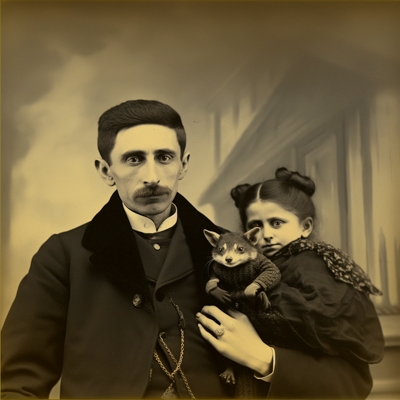Ferret History: From Hunting Companions to Household Pets:
Summary:
This enlightening exploration journeys through the captivating history of ferrets, from their early domestication as hunting companions to their cherished status as household pets today. Originating as valuable partners in hunting and pest control, ferrets have played various roles throughout history, including their presence in royal courts during the Middle Ages and as show animals in the Victorian era. The 20th century saw ferrets serving in wars and contributing to scientific research. Today, these playful and affectionate animals are beloved pets in many parts of the world, although their legal status as pets varies. This article delves into the rich and multifaceted history of ferrets, highlighting their enduring bond with humans and their evolving role in our lives.


- Ferrets in Ancient Times: Early Domestication
- The Role of Ferrets in Hunting and Pest Control
- Ferrets in the Middle Ages: From Europe to the New World
- The Victorian Era: Ferrets as Pets and Show Animals
- The 20th Century: Ferrets in War and Research
- The Modern Ferret: A Beloved Companion Animal
In the quiet corners of history, weaving through the tapestry of human civilization, is the curious and captivating story of the ferret. From their early days assisting hunters in ancient lands to their modern status as playful and cherished pets, ferrets have journeyed alongside humans for thousands of years. In this article, we will explore the fascinating history of ferrets, tracing their path from hunting companions to beloved members of our households.
The history of ferrets is believed to stretch back over 2,500 years. Originating from the European polecat, ferrets were likely first domesticated in the Mediterranean region. Ancient documents and artifacts suggest that they were used to control rabbit and rodent populations, protecting grain stores from pests. The Greeks and Romans are known to have utilized ferrets for this purpose, and they likely played a role in the spread of ferrets throughout Europe as their empires expanded.
For centuries, ferrets have been prized for their ability to control pests. In medieval Europe, ferrets were used in a practice known as “ferreting,” where they were sent into burrows to drive rabbits and rodents out of their hiding places, making them easier for hunters to catch. This practice was not only a form of pest control but also a way to procure food. The agility and natural hunting instincts of ferrets made them invaluable companions for human hunters, a relationship that has endured for centuries.
During the Middle Ages, ferrets were well-established in Europe and were often kept by royalty and nobles as a symbol of wealth and status. They were also brought to the New World by European settlers, primarily for their skills in pest control. Records from the early 17th century indicate that ferrets were among the animals brought to the Jamestown colony in Virginia, marking one of the first introductions of ferrets to North America.
The Victorian era marked a significant shift in the role of ferrets in human society. While they continued to be used for hunting and pest control, they also began to be kept as pets and show animals. The late 19th century saw the establishment of ferret clubs and societies in England, and ferret shows became popular events. During this time, selective breeding for specific traits, such as coat color and temperament, became more common, leading to the variety of ferret breeds we know today.
In the 20th century, ferrets played a variety of roles beyond companionship. During World War II, they were used to help run cables through tight and intricate spaces in ships and aircraft, proving to be invaluable in various military operations. In addition to their roles in war, ferrets have also been important in medical research. Their similar respiratory system to humans has made them key models in the study of various diseases, including influenza and COVID-19.
Today, ferrets are cherished pets in many parts of the world. Known for their playful and inquisitive nature, they have captured the hearts of countless pet owners. Modern ferrets are often described as “cat-like” in their grooming habits and “dog-like” in their loyalty and affection toward their human companions. Advances in veterinary care, including vaccinations and spaying/neutering practices, have contributed to the increasing lifespan and health of domestic ferrets.
As we look back on the rich and varied history of ferrets, it is clear that these small and spirited animals have been far more than mere pets; they have been partners, helpers, and friends to humans for millennia. Today, as we watch a ferret playfully dart through a living room or nestle into a loving embrace, we are witnessing a relationship that has been nurtured through the ages. It is a bond that reminds us of the profound and enduring connections we can forge with the animal world.


